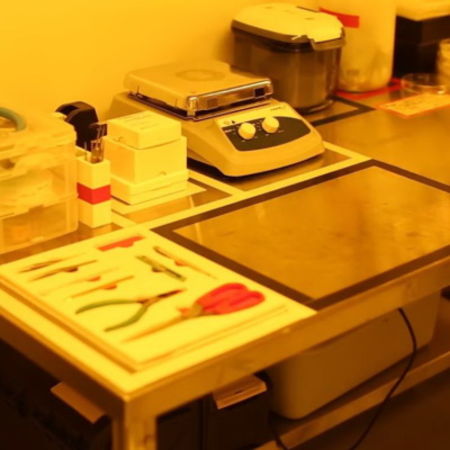A team from MIT share their experience of introducing the ‘Lean Lab’ approach, which helped them to optimise workflows, reduce costs and increase safety and productivity in the MIT Media Lab’s ‘YellowBox’ cleanroom space. The results are summarised in an essay published in Advanced Intelligent Systems.
You may also like: The Inner Workings of a ‘Smart’ Hospital
Lean management concept originated in Japan and since then has gained popularity in certain industries, eg in auto manufacturing, as well as in hospital management, but is still rarely applied in academic settings.
According to Canan Dagdeviren, an assistant professor at the MIT Media Lab, the
common lab issues are:
- Inefficiencies and lost productivity due to: lack of standard operating procedures, surplus of deficits of supplies, amount of time spent on lab upkeep and maintenance, ineffective layout of space.
- Potential safety risks.
- Limited materials and resources.
- Limited lab and office space.
- Fast-paced environment.
To organise a workspace for efficiency and effectiveness, in 2018 the MIT
team introduced the lean system based on five guiding principles they call ‘5S’:
Sort, Set in order, Shine, Standardise, and Sustain.
They assigned specific function and location to every item in the lab and sorted and stored everything according to how often any particular item is used. Depending on its function, each item is colour-coded (raw materials, instruments, hazardous chemicals, etc) as is its location. There are standard operating procedures on utilisation, storage and restocking, and every lab user has been trained on them. As a result, when in March the lab had to close operations due to COVID-19, they were able to do that in just 15 minutes and is expected to be able to open up nearly as quickly.
The lab also implements the Just‐In‐Time (JIT) ordering system, ie “having just
enough inventory readily available to meet current demand but avoiding excess.”
This helps to reduce the amount of wasted chemicals and the overall quantity of
available hazardous materials, while seamlessly coordinating their inventory ordering
flow and eliminating wasted space in the cleanroom.
Lean management has not only improved workflow but brought other benefits. Between
2018 and 2019, the lab:
- Reduced its spending (by 41% on chemicals; by 52% on materials) and raw material consumption (by 14%).
- Increased its productivity (a 116% increase in the number of fabricated devices) while reducing the number of staff (from 9 in 2018 to 7 in 2019).
- Created safer lab space (with 5S, the lab has had no accidents, injuries, or near misses).
- Cut the average set-up time from 60 min to 15 minutes.
- Decreased experimental turn‐around times.
- Improved quality of end results.
MIT’s Environment, Health and Safety Office, which has collaborated on the
project, hopes to extend the lean lab approach to other types of labs, eg biology
or chemistry labs, or maker spaces and eventually spread it beyond MIT’s campus.
An explanatory video can be found here.
Source: MIT
Image credit: ‘5S’ Lean
Labs























